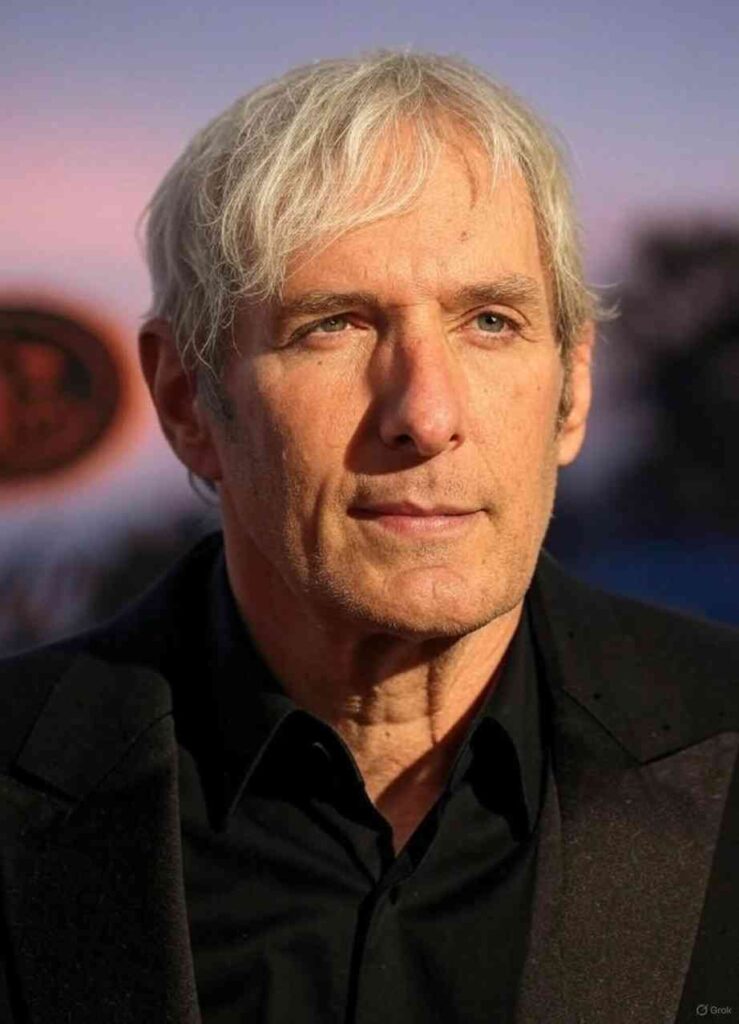Discover the inspiring journey of the United Healthcare CEO, learn about their innovative strategies and industry impact, and explore how transformative leadership is shaping modern healthcare.
The Transformational Journey of the United Healthcare CEO: Innovation, Resilience, and Vision
Introduction: Embracing a New Chapter in Healthcare Leadership
From the frontline of patient care to boardrooms where strategic decisions shape the future of the healthcare industry, the united healthcare ceo has emerged as a formidable force. This role is not just about steering a company—it’s about pioneering change in an industry marked by rapid technological innovation, complex regulations, and a fierce focus on patient outcomes.

In today’s blog post, we unpack the layers of leadership, the strategic initiatives that have driven success, and the fresh perspectives that differentiate the United Healthcare executive from traditional corporate figures. Whether you’re a healthcare professional, a business enthusiast, or simply curious about the power behind one of the industry’s leading companies, this post is crafted to inform and inspire.
The Genesis: Early Career and Pathway to Leadership
A Solid Foundation
The journey of the united healthcare ceo is anchored in years of hard work, perseverance, and a deep understanding of both the clinical and business aspects of healthcare. With a robust educational background in business administration and healthcare management, this leader laid the groundwork by working across various segments of the healthcare value chain. Early stints in policy roles, coupled with real-world experience in patient care environments, provided a unique perspective on the challenges and opportunities within the sector.
Building Expertise Through Diverse Roles
Before ascending to the top, the future CEO navigated several roles across multiple organizations. These roles were instrumental in honing skills such as strategic planning, operational excellence, and change management. A pivotal chapter in their career was the ability to bridge the gap between patient-centric values and shareholder expectations. Balancing efficiency with compassion continues to define their approach to leadership, creating a philosophy that values both results and relationships.
For those interested in diving deeper into leadership trajectories in healthcare, this article on pioneering healthcare careers provides additional context.
Strategic Vision: Steering Through Complexity with Innovation
Embracing Technology and Digital Transformation
One of the most remarkable aspects of the united healthcare ceo is the commitment to leveraging technology to enhance patient care and streamline operations. Recognizing that digital transformation is no longer optional, the leadership has invested heavily in data analytics, artificial intelligence, and telehealth services. These initiatives have not only improved operational efficiencies but have also set a new industry benchmark in proactive patient management.

Key Technological Initiatives:
- Data-Driven Decision Making: By utilizing sophisticated data analytics, the executive team can predict healthcare trends, personalize patient care plans, and manage risk more effectively.
- Telehealth Expansion: In response to an evolving healthcare ecosystem, significant investments in telehealth have made medical consultations more accessible, particularly in rural and underserved areas.
- Artificial Intelligence: AI-driven tools help in early diagnosis and patient management, ultimately reducing the burden on traditional healthcare systems.
Such initiatives underscore the progressive approach of the united healthcare ceo in navigating the digital age—a clear demonstration of how aligning business practices with technology can drive transformative change.
Leading with a Purpose: Patient-Centricity as a Core Value
At the heart of every strategic decision lies a commitment to enhancing patient outcomes. The leadership’s emphasis on quality of care goes hand in hand with its technological innovations. This patient-centric approach is evident in several key areas:
- Personalized Healthcare Programs: Tailored health management plans ensure that patient needs are met on an individual basis, reinforcing trust and satisfaction.
- Integrated Care Models: By breaking down silos between various healthcare services, a more seamless experience is provided, facilitating better communication across care teams.
- Community Outreach: Proactive community engagement initiatives have been a hallmark of leadership, demonstrating a commitment to societal well-being alongside corporate growth.
For further insight into the evolution of patient-centric care models, check out this comprehensive guide on healthcare innovation .
Comparisons with Industry Peers
What Sets the United Healthcare CEO Apart?
A comparative analysis with other industry titans reveals several unique qualities in the united healthcare ceo that contribute to long-term success:
| Aspect | United Healthcare CEO | Other Industry Leaders |
|---|---|---|
| Vision & Strategy | Integrates data analytics with patient care | Often focus on cost-cutting measures |
| Technology Adoption | Invests in AI, telehealth, and digital tools | Incremental technology upgrades |
| Cultural Transformation | Champions a culture of innovation and inclusivity | Traditional hierarchical structures |
| Patient Centricity | Puts patient outcomes at the forefront | Balances financial metrics with patient care |
| Risk Management | Proactive and predictive, leveraging real-time data | Reactive to market changes and healthcare trends |
This comparative outlook not only highlights the competitive edge but also underscores the importance of adapting leadership styles to the shifting landscape of modern healthcare.
Insider Insights: A Personal Perspective
As someone who has observed trends across multiple industries, it’s clear that the ability to marry the best of technology with empathetic leadership is rare. Many leaders in sectors ranging from finance to technology are still grappling with how to balance efficiency with human touch. The united healthcare ceo exemplifies this balance by ensuring that every technological upgrade or business decision is ultimately geared toward improving patient health and community welfare.
Driving Change: The Impact on Healthcare Delivery
Operational Efficiency and Cost Management
In today’s healthcare arena, operational efficiency is not just a metric of success but a necessity for survival. The leadership’s focus on streamlining operations has had a significant ripple effect on cost management and service delivery. By reducing redundant processes and harnessing automated systems, the company has managed to cut costs while simultaneously improving quality metrics.

Benefits of Operational Innovations:
- Reduced Wait Times: Faster processing and improved patient flow have minimized delays in treatment.
- Cost Savings: Efficient workflows translate into lower operational costs, which can be reinvested into patient services.
- Enhanced Accuracy: Automation reduces human error, ensuring that data is reliably used to guide critical decisions.
For more details on cost management in healthcare operations, you may find this report by Harvard Business Review insightful .
The Ripple Effect: Broader Industry Implications
The proactive stance of the united healthcare ceo has set new standards that ripple across the entire healthcare spectrum. Here’s how:
- Benchmarking Quality: Innovations introduced by United Healthcare often serve as a benchmark for competitors and new startups alike.
- Policy Influence: Successful initiatives and operational models have influenced national and regional health policies, fostering a more robust framework for patient care.
- Collaborative Ecosystems: By fostering partnerships with technology firms, research institutions, and healthcare providers, the leadership has cultivated a collaborative ecosystem that encourages continuous improvement.
These efforts not only drive internal growth but also signal a broader shift towards a more integrated, collaborative, and technology-enabled healthcare system.
Navigating Challenges: Resilience in a Dynamic Environment
Regulatory Hurdles and Policy Changes
Operating in an industry as heavily regulated as healthcare comes with its own set of challenges. Navigating ever-changing policies and compliance requirements is a constant balancing act. The united healthcare ceo has consistently demonstrated an ability to adapt to these shifts, leveraging a deep understanding of regulatory landscapes to ensure that the company not only complies with current standards but often influences upcoming reforms.
Key strategies in this area include:
- Proactive Compliance: Staying ahead of regulatory changes by investing in robust legal and compliance teams.
- Government Partnerships: Working closely with policymakers to shape regulations that support both innovation and patient safety.
- Flexible Business Models: Implementing dynamic business strategies that can quickly adapt to regulatory shifts.
Financial Pressures and Market Dynamics
No leadership journey is devoid of financial challenges. Market fluctuations, increasing competition, and evolving consumer expectations require a constant re-evaluation of business models. The united healthcare ceo has often been at the forefront of financial innovation—implementing cost-efficiency measures while continuing to invest in long-term growth and sustainable business practices.
- Strategic Investments: Allocating funds to high-impact areas like technology and patient outreach ensures continued growth.
- Financial Resilience: Diversifying revenue streams to buffer against market volatility has been crucial in maintaining stability.
- Long-Term Vision: Balancing short-term cost-cutting with long-term investments in research and development guarantees sustainable progress.
The Human Element: Employee Engagement and Corporate Culture
An often-overlooked aspect of any successful leadership model is the emphasis on people. The united healthcare ceo understands that a highly motivated, innovative, and empathetic workforce is indispensable in driving change. Efforts to cultivate a collaborative and inclusive culture have not only improved employee satisfaction but have also boosted overall productivity and innovation.

Pillars of a Strong Corporate Culture:
- Transparency: Open communication channels foster trust between management and staff.
- Inclusivity: Valuing diverse perspectives ensures that a wide range of ideas contribute to the company’s success.
- Professional Development: Continuous learning opportunities and mentorship programs empower employees to grow within the organization.
For more on fostering innovation in corporate culture, you can explore insights from leading business studies .
Future Outlook: A Roadmap for Continued Success
Getting Ready for the Next Era of Digital Evolution.
As we look ahead, the role of the united healthcare ceo remains pivotal in anticipating and shaping future trends in healthcare. The ongoing evolution in digital health and personalized medicine is just the tip of the iceberg. Future strategies are expected to include:
- Expansion of AI Capabilities: Further integration of AI in diagnostics, patient monitoring, and predictive analytics to improve the accuracy and timeliness of interventions.
- Greater Emphasis on Cybersecurity: As healthcare data becomes increasingly digitized, robust cybersecurity measures will be essential to protect patient privacy and institutional integrity.
- Harnessing Big Data: Leveraging vast pools of data to better understand patient demographics, disease patterns, and treatment outcomes, thereby personalizing healthcare solutions to unprecedented levels.
Engaging Stakeholders in a Transformative Vision
The future success of United Healthcare depends on strong, adaptive leadership that can engage all stakeholders—from employees and patients to partners and policymakers. The united healthcare ceo is committed to fostering an environment where innovation is not only encouraged but expected. Key initiatives include:
- Stakeholder Collaboration: Regular forums and collaborative platforms that bring together diverse voices for strategic planning.
- Community Investment: Expanding community outreach programs to address local healthcare needs and promote public health initiatives.
- Sustainable Growth: A balanced approach to growth that considers environmental, social, and governance (ESG) principles ensures that the company’s progress benefits everyone.
For a detailed look at future trends in healthcare leadership, you might consider reading recent analyses by leading industry experts .
Personal Reflections: What Makes Transformational Leadership Stand Out
In personal interactions and professional circles, the impact of a leader extends far beyond quarterly reports or stock valuations. Many industry insiders have commented on how the united healthcare ceo’s hands-on approach, openness to new ideas, and unwavering commitment to patient care set a benchmark for leadership excellence.
Experiences that Inspire Change
- Mentorship Moments: Several executives and emerging leaders cite inspiring mentorship moments where the CEO’s hands-on approach transformed their outlook on both career and personal growth. These experiences foster an environment where ideas can be freely exchanged, and innovation can blossom.
- Inspiring Storytelling: Through public engagements, keynote speeches, and interviews, the CEO has communicated not only business strategies but also heartfelt stories of resilience and transformation. These narratives have resonated with both employees and the broader community, instilling a sense of shared purpose and optimism.
- Adaptive Learning: In an era defined by rapid change, the willingness to listen to feedback—from patients, frontline staff, and industry peers alike—has been instrumental in maintaining a dynamic and forward-thinking leadership style.
Such personal experiences and values are fundamental in distinguishing transformational leadership from its more traditional counterparts, highlighting the importance of empathy, adaptability, and visionary thinking in driving lasting change.
Conclusion: Embracing a Vision for the Future
The journey of the united healthcare ceo is emblematic of what true leadership in the modern healthcare industry should embody: innovation, resilience, and an unwavering commitment to the welfare of patients and communities alike. With an impressive track record of navigating complex challenges, investing in technology, and championing patient-centric care, this leadership stands as a model for future executives who aspire to lead with both heart and mind.
As we have seen, strategic initiatives such as digital transformation, operational efficiency, and cultural integration have not only bolstered the company’s market standing but have also set new standards across the industry. By balancing the dual imperatives of cost management and quality patient care, the united healthcare ceo is paving the way for a more sustainable, effective, and compassionate healthcare ecosystem.
A Call-to-Action
What are your thoughts on the evolving role of leadership in healthcare? Do you believe that technology will ultimately redefine the traditional roles of CEOs in the industry? Your thoughts and perspectives are welcome—feel free to leave a comment below.If you found this deep dive into the transformational strategies of the united healthcare ceo engaging, be sure to subscribe to our newsletter for more expert analyses and inspiring success stories. For further exploration of related topics, check out our internal guide on healthcare innovation and join the conversation.
Final Thoughts: The Road Ahead
In an environment marked by constant change and fierce competition, the story of the united healthcare ceo is a powerful reminder that visionary leadership can drive not only corporate success but also meaningful societal change. By embracing technology, fostering a culture of inclusivity, and maintaining an unwavering focus on patient well-being, the executive leadership at United Healthcare is not merely adapting to the future of healthcare—they are actively shaping it.
As we look to the future, one thing remains clear: The principles of innovation, collaboration, and resiliency will continue to define what it means to lead in this dynamic industry. By inspiring current and future leaders with a commitment to excellence and a passion for progress, the journey of the united healthcare ceo becomes a beacon for how strategic vision and human empathy can coalesce to create a better, healthier world.
Whether you are an aspiring leader or a seasoned professional, the lessons drawn from the transformational journey of the united healthcare ceo encourage us all to push boundaries and embrace change. Together, let’s champion a future where healthcare is as much about compassion as it is about technology, and where the leaders of tomorrow are empowered to build on the foundation laid by trailblazers today.
Keep yourself informed, stay motivated, and join me in embracing this incredible path of growth and change. If you enjoyed this post, please share it with your network and explore our other content for more insights into the future of healthcare leadership.
By merging deep industry insights with a compelling narrative, this exploration of the united healthcare ceo not only informs but inspires a conversation about the future of leadership in one of the world’s most critical sectors. The journey is ongoing, and with visionary leaders paving the way, the future of healthcare is brighter than ever.
Thank you for reading. Stay tuned for more in-depth, thought-provoking content on the trends and transformations shaping our world.

